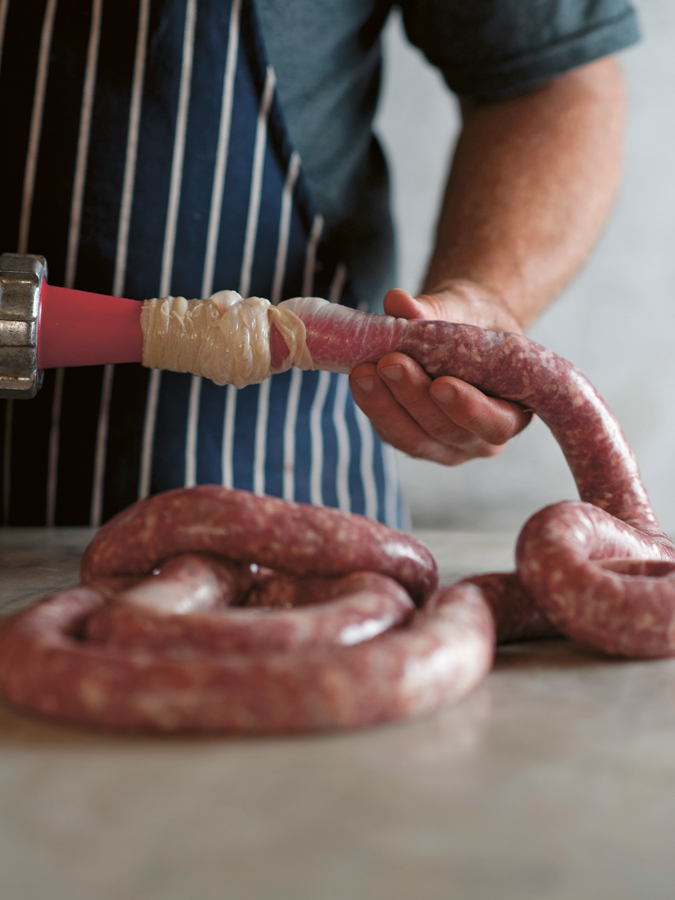
SAUSAGE MAKING
There are a couple of rules when making your own bangers. Hygiene is one. Keep the meat cool, wash your hands well before and during the making, and sanitise (sterilise) the equipment you use. (A baby sanitiser, available at most supermarkets, works well for domestic sausage making.) Use non-reactive dishes so nothing will rust or oxidise, and keep all your equipment as cold as possible to help the meat emulsify properly — popping the mincer parts into the freezer before using is a great way to do this.
Sausages need to be hung for a day (at least 12 hours) after making or they will not have bound together properly and will split when cooked. And we’re huge fans of natural casings (sheep for chipolatas, pork for nice fat sausages and ox casings – or bungs for salami and cotechino). Often they’re sold packed in salt, and need soaking for an hour before use. They’re the intestines of the animal that have been cleaned well but they do spiral around and need to be untangled before use. Pop the casings over a tap on low and let the cold water find its way through the casings as you untangle them. Some modern casings are sold already untangled and ready to go, pulled over plastic tubing. They’re expensive, but an awful lot easier to work with. Never let any type of casings go dry or they will become unmanageable, and watch out for holes, as this will seriously disrupt the pumping of the sausages.
Ideally you’ll have or can borrow a sausage cannon to pump out the mince into the casings. If not, a piping (icing) bag may do the trick, but it’s slow and painful by comparison.
